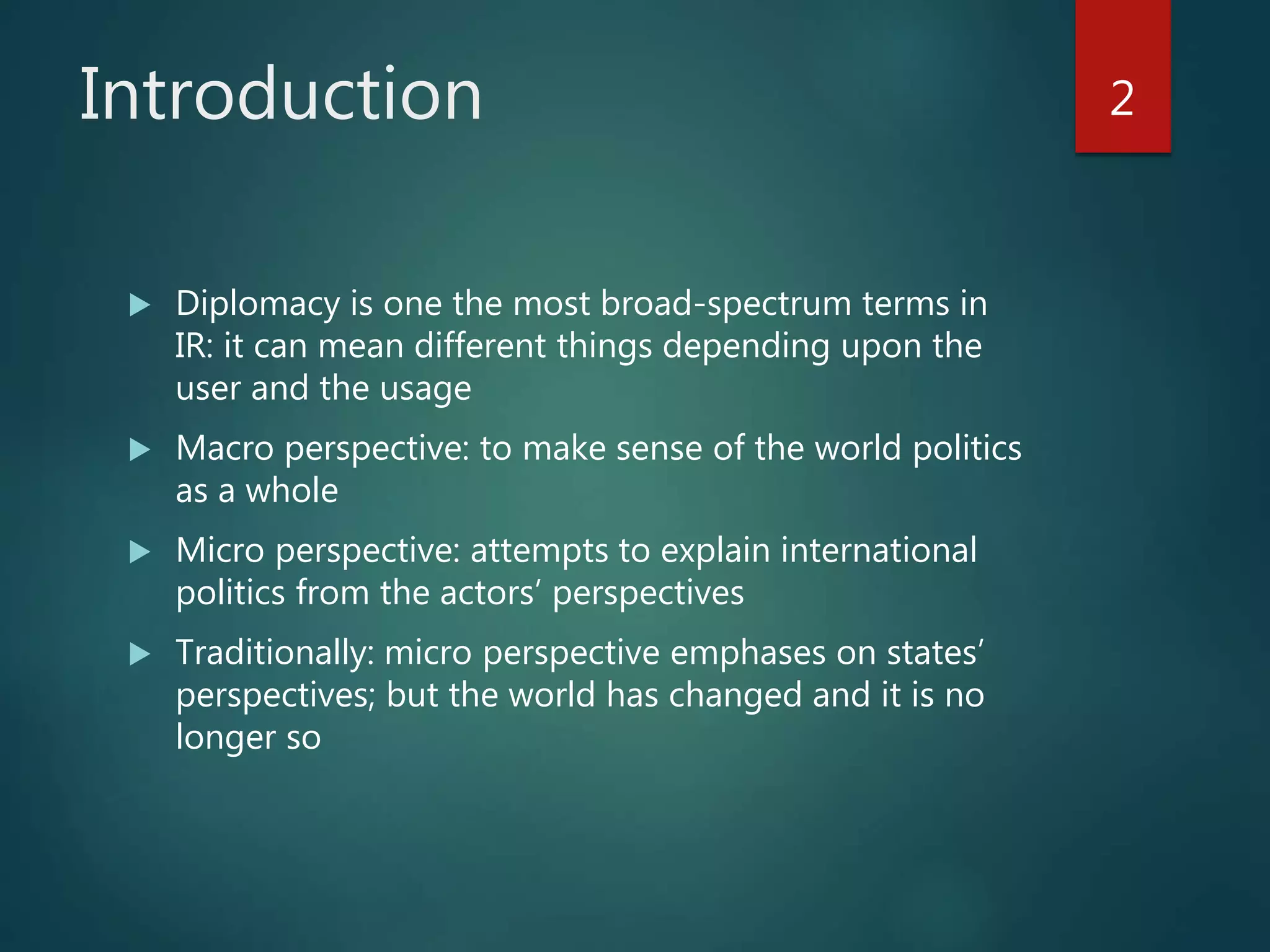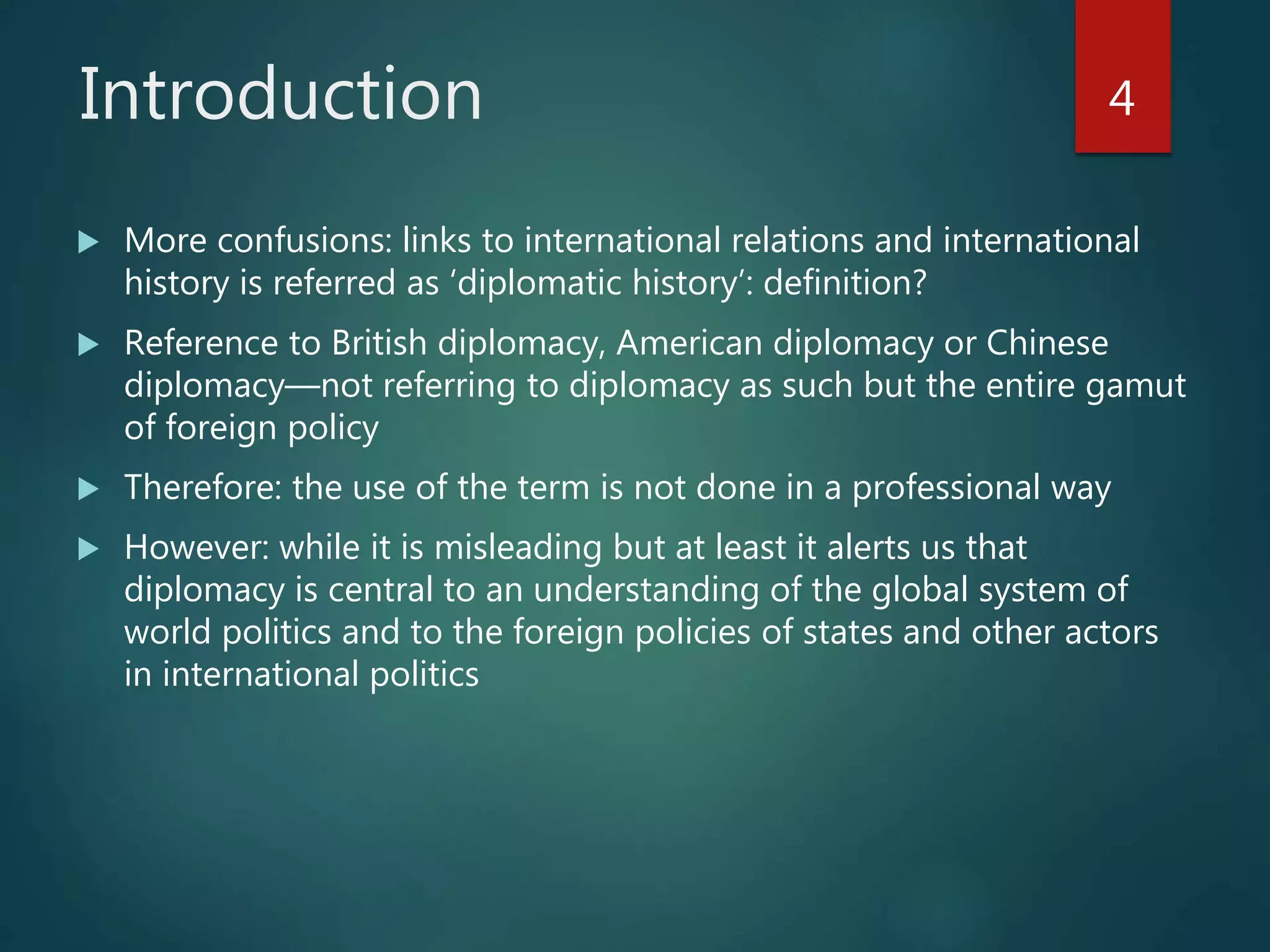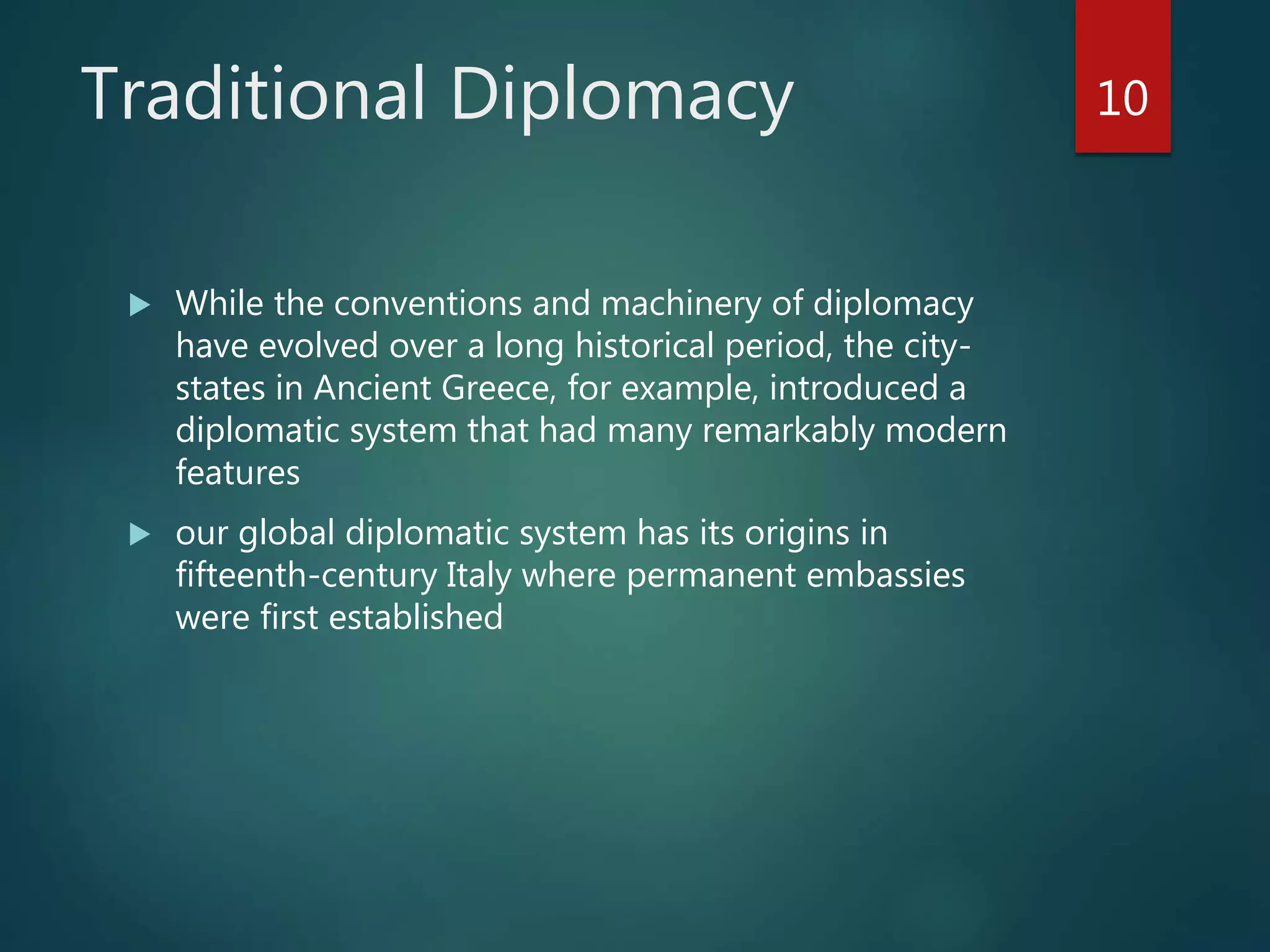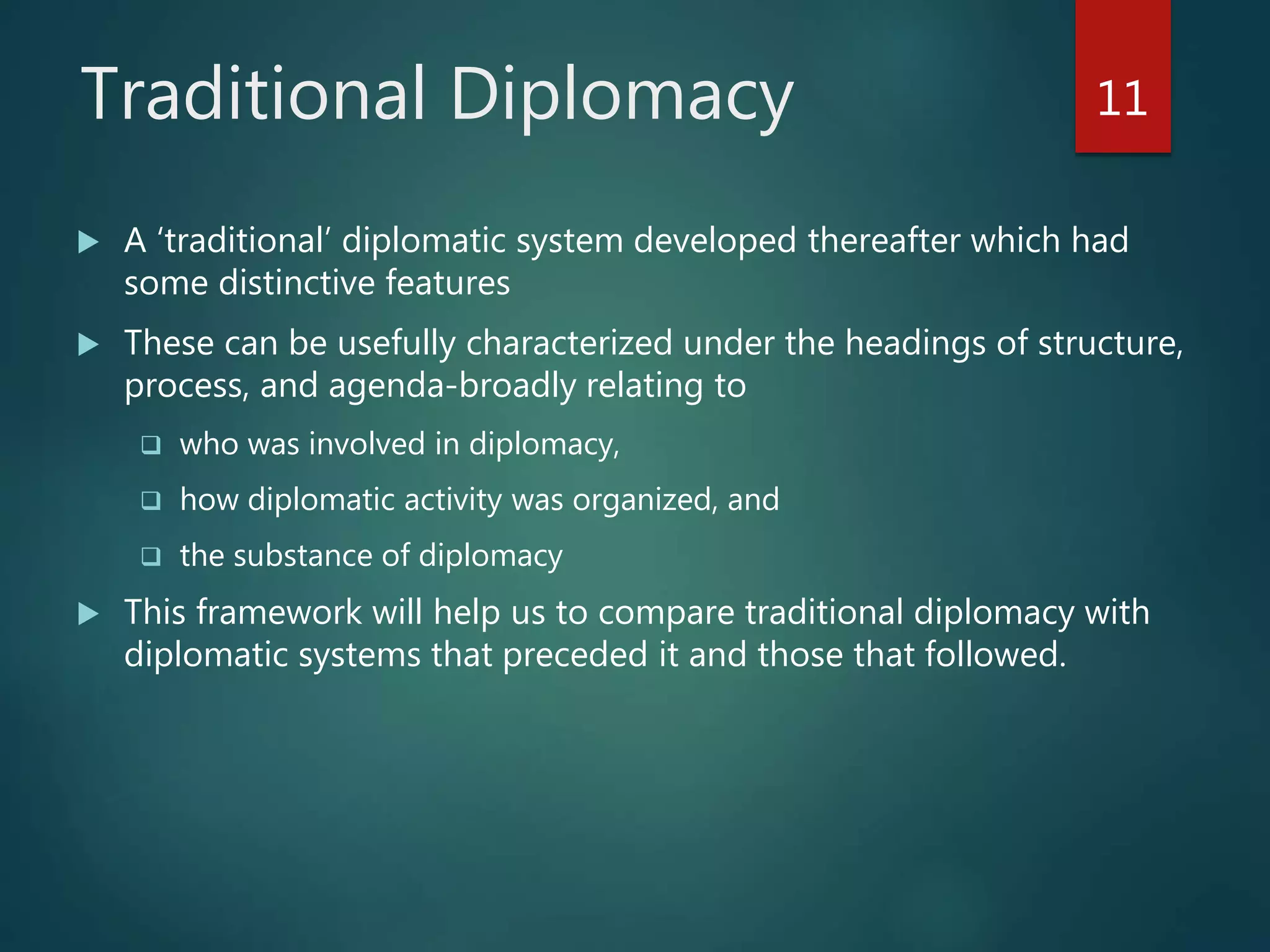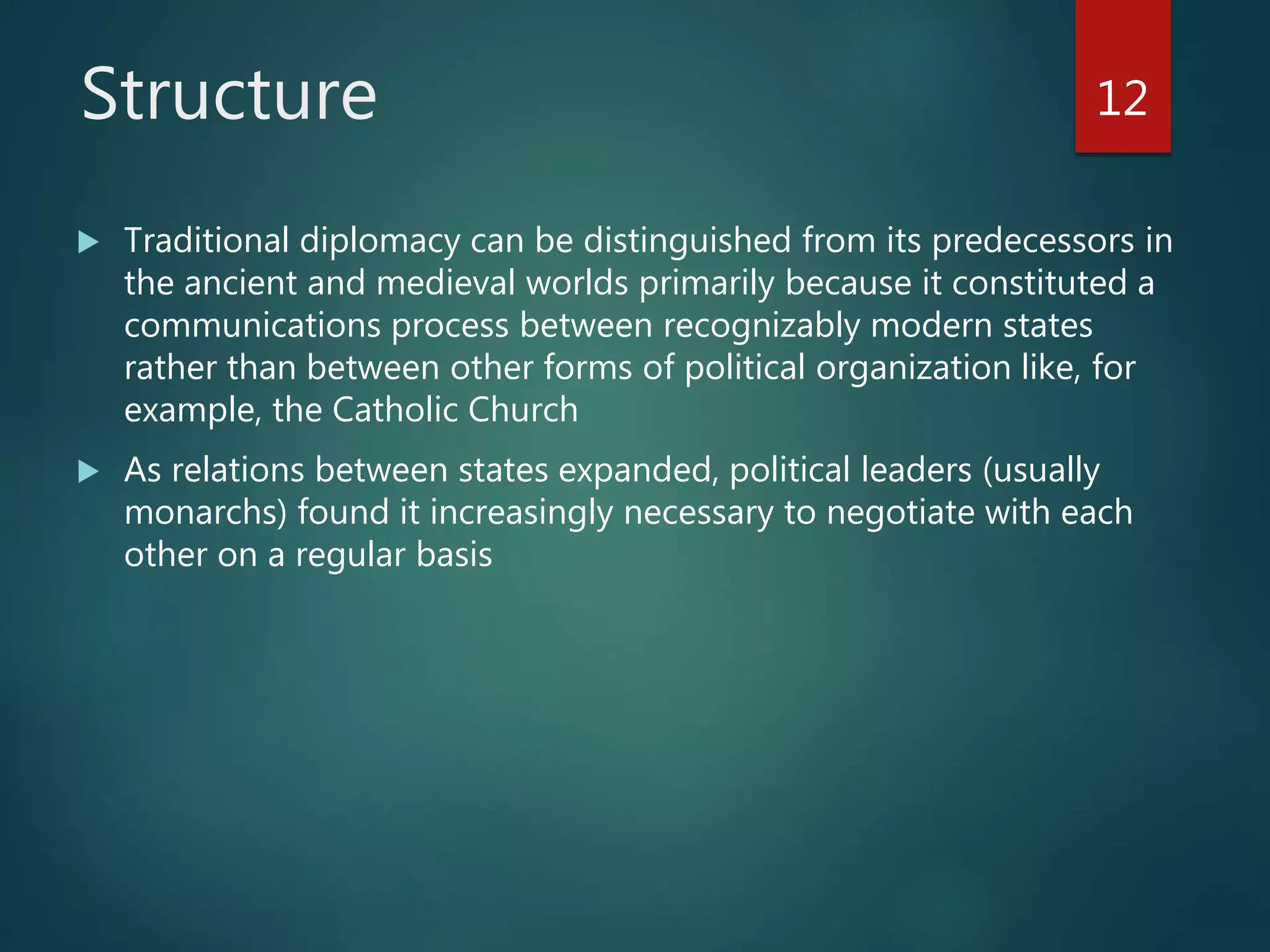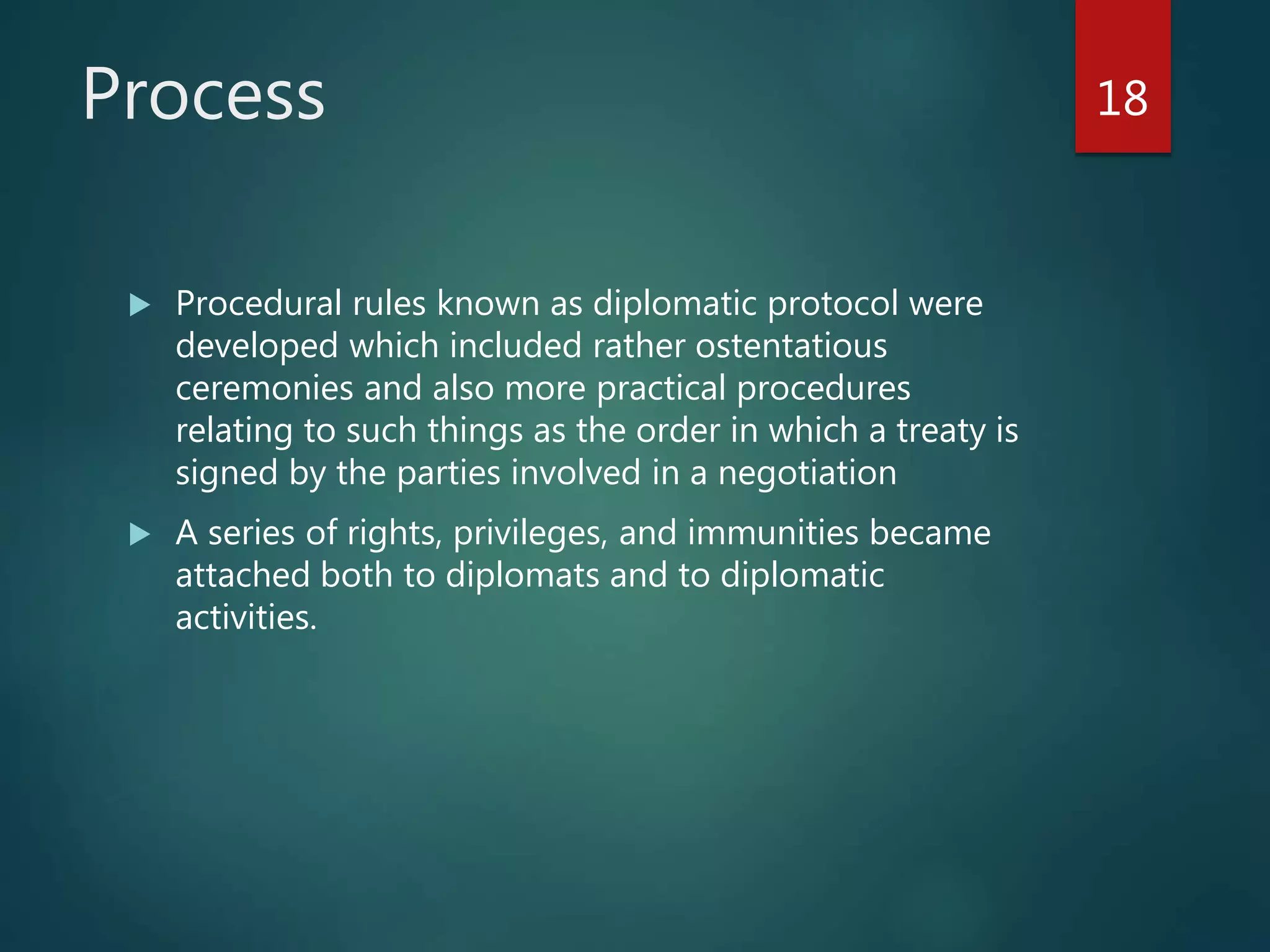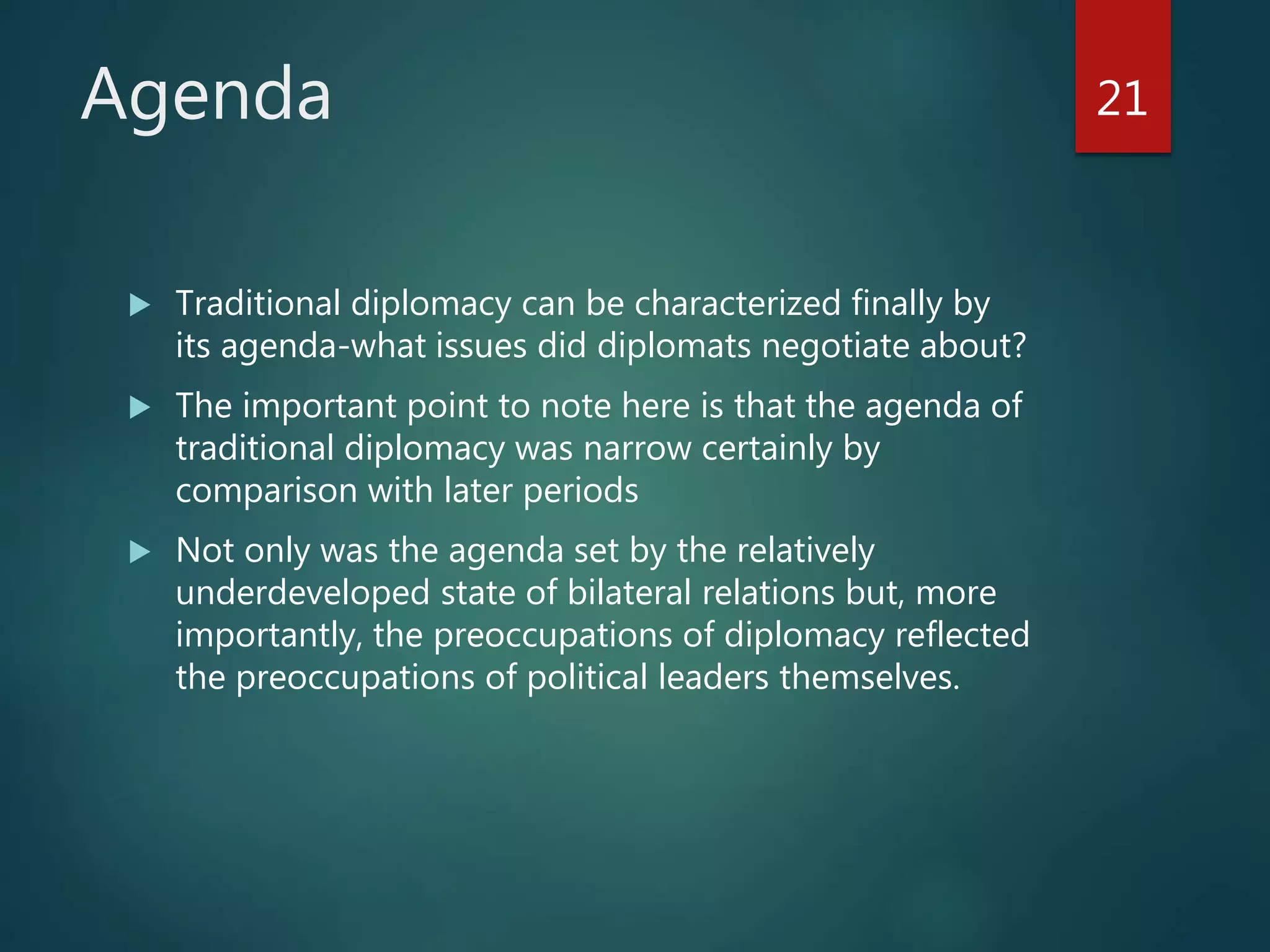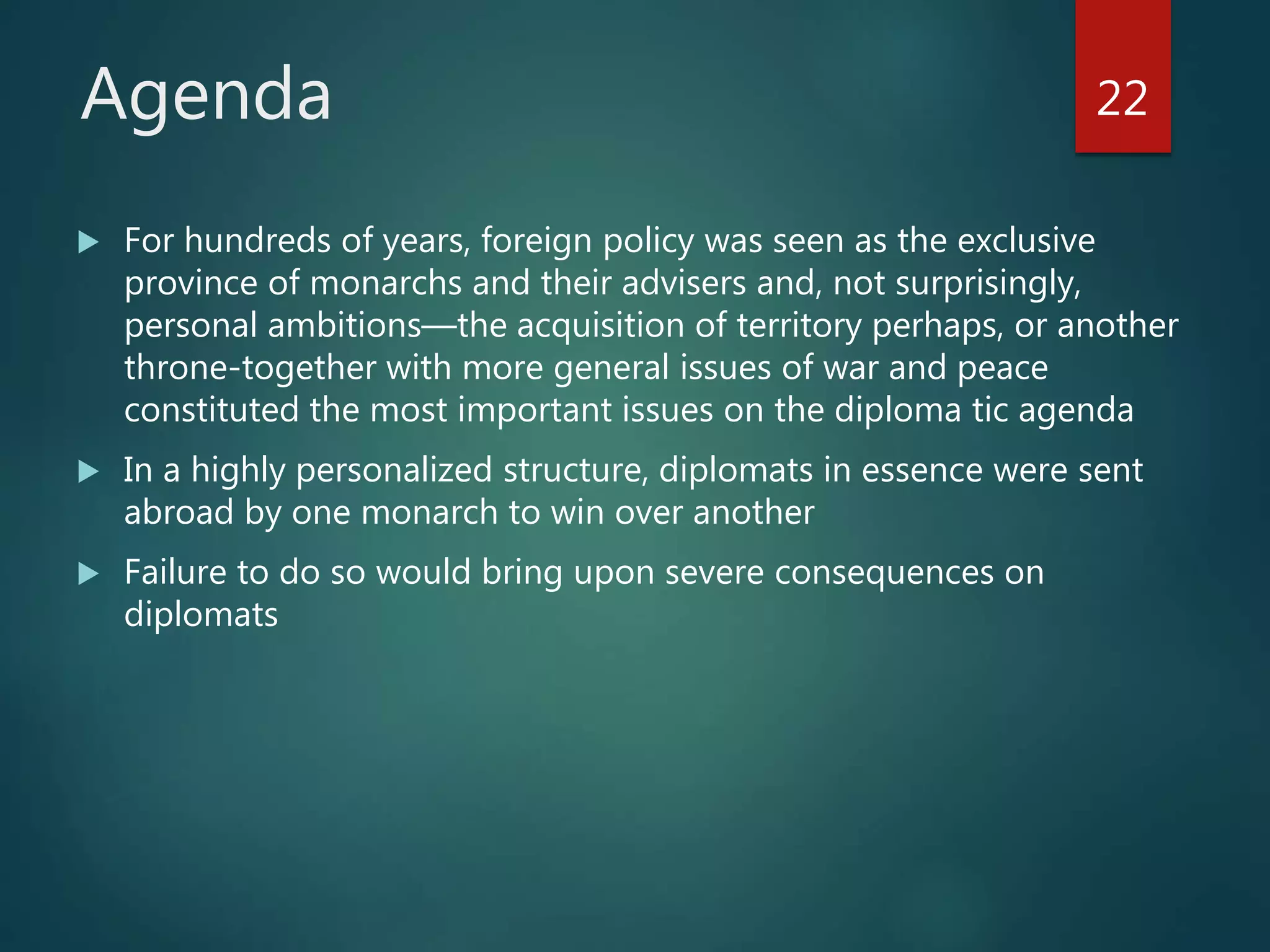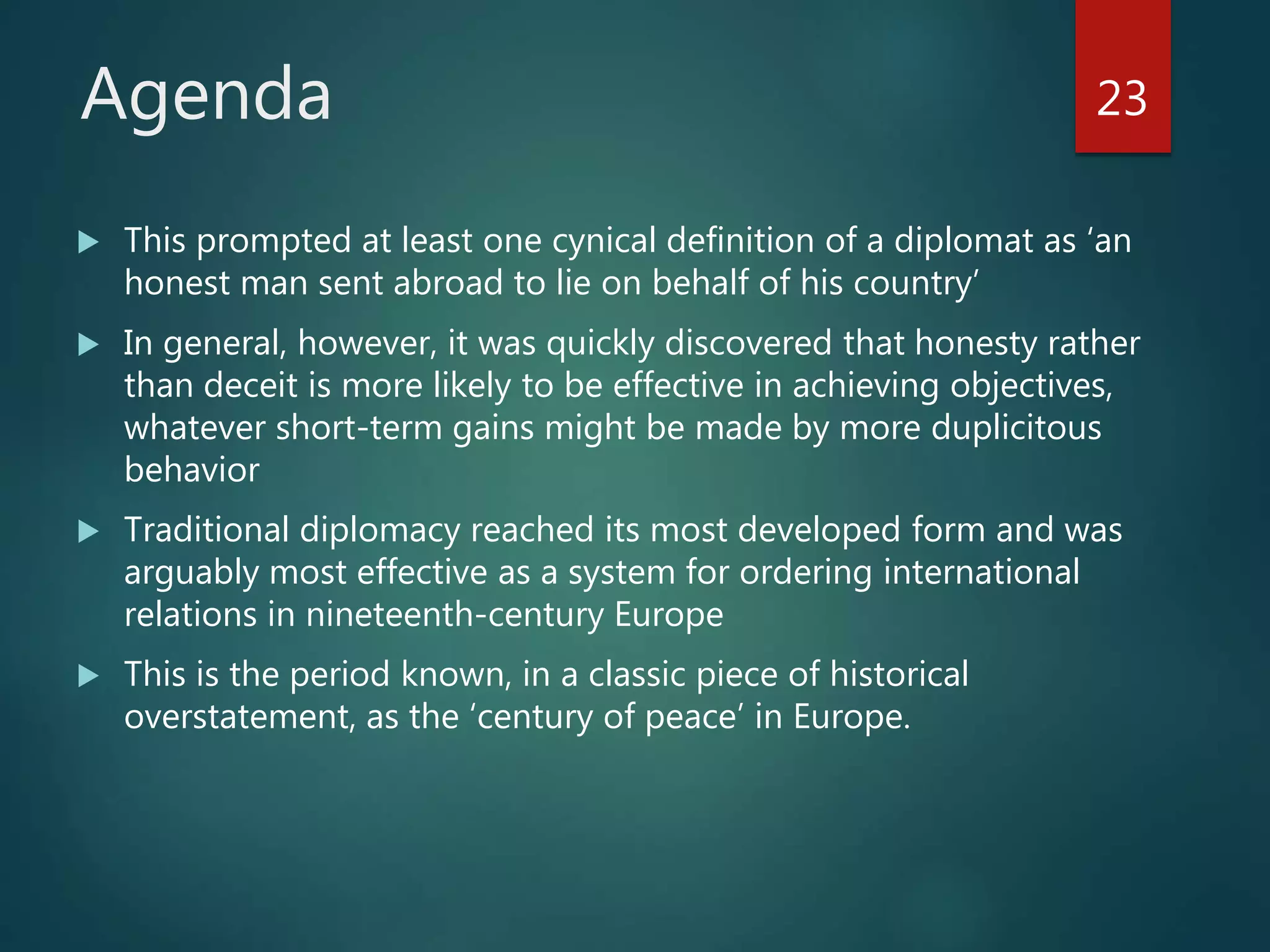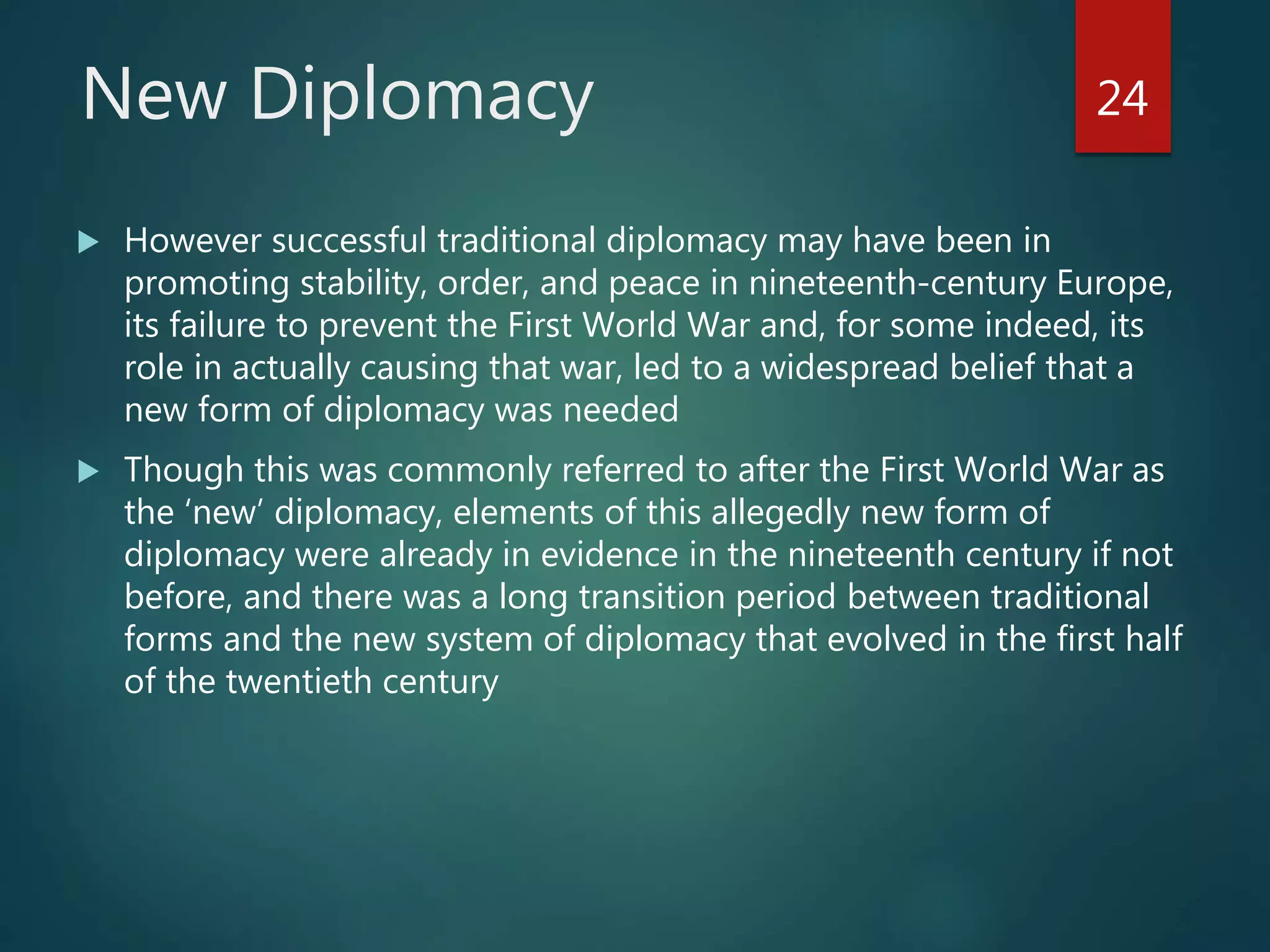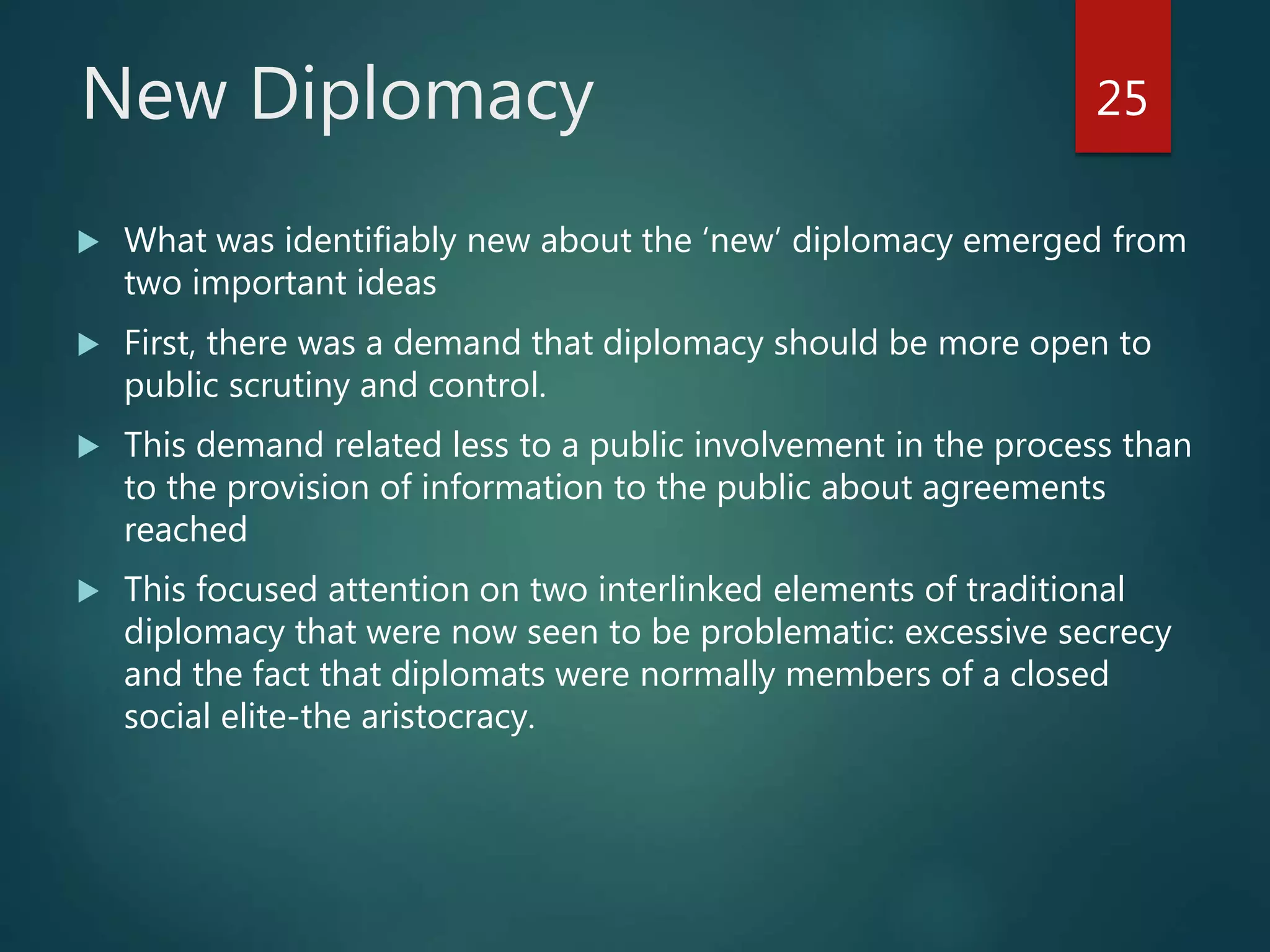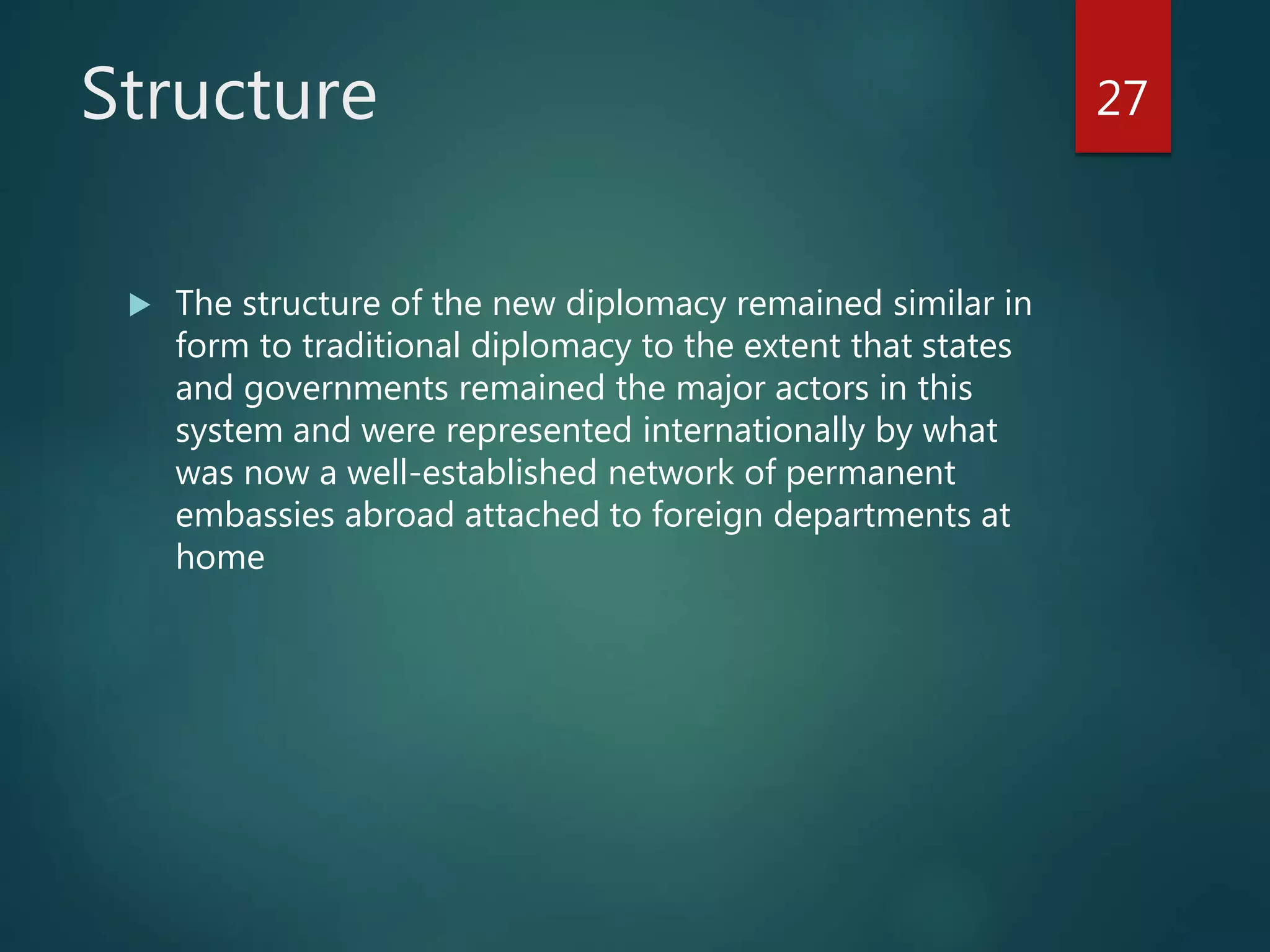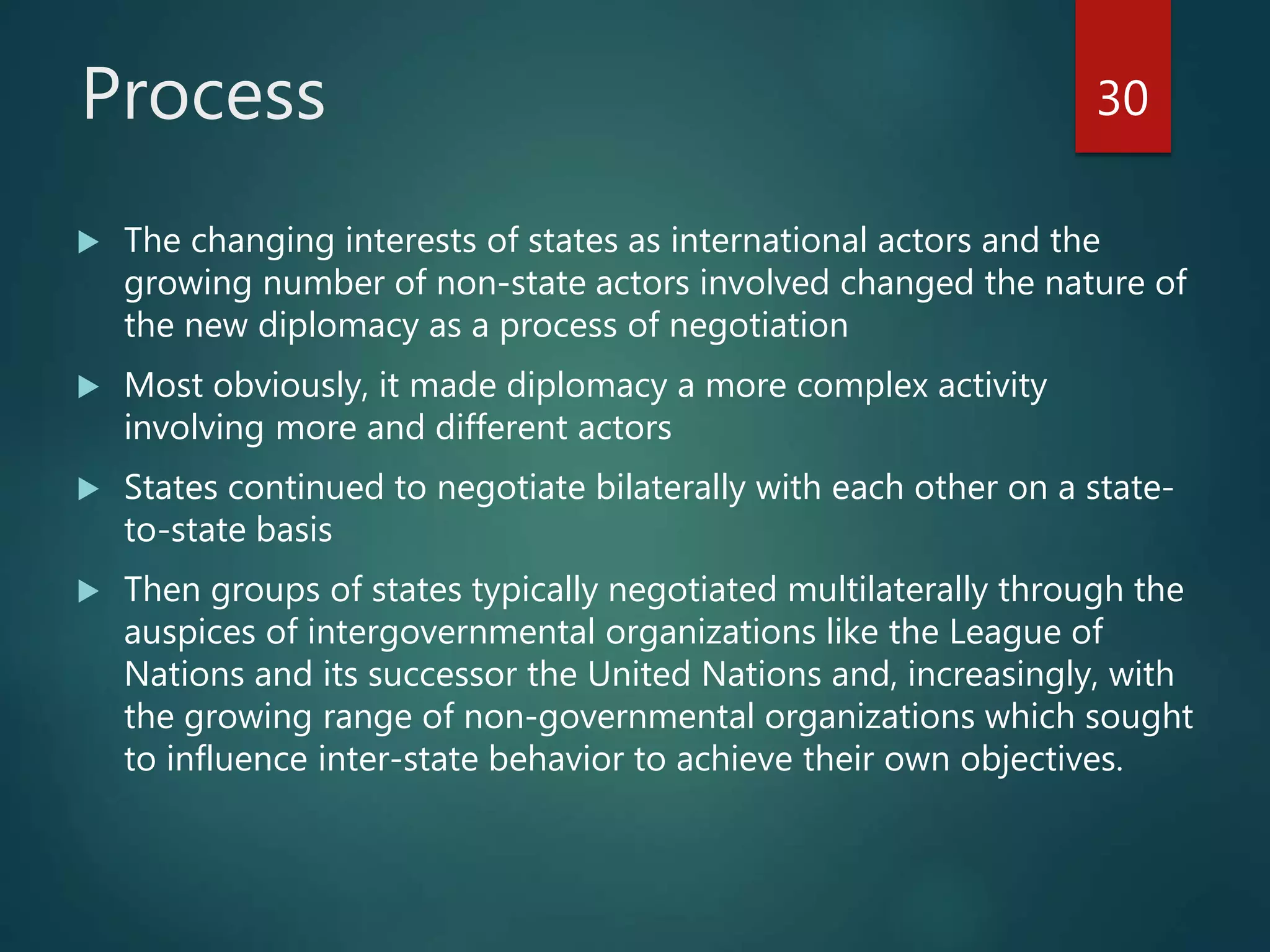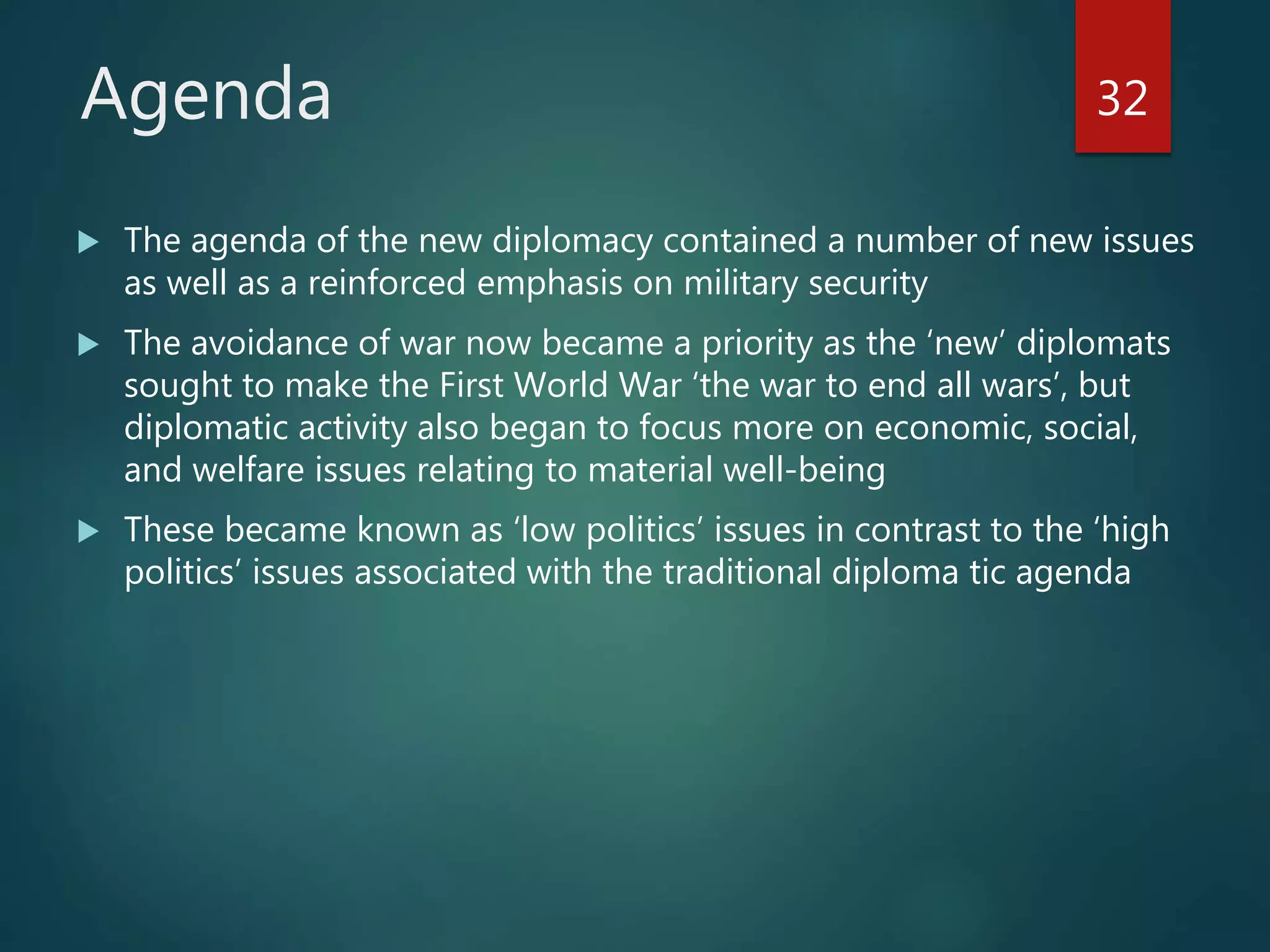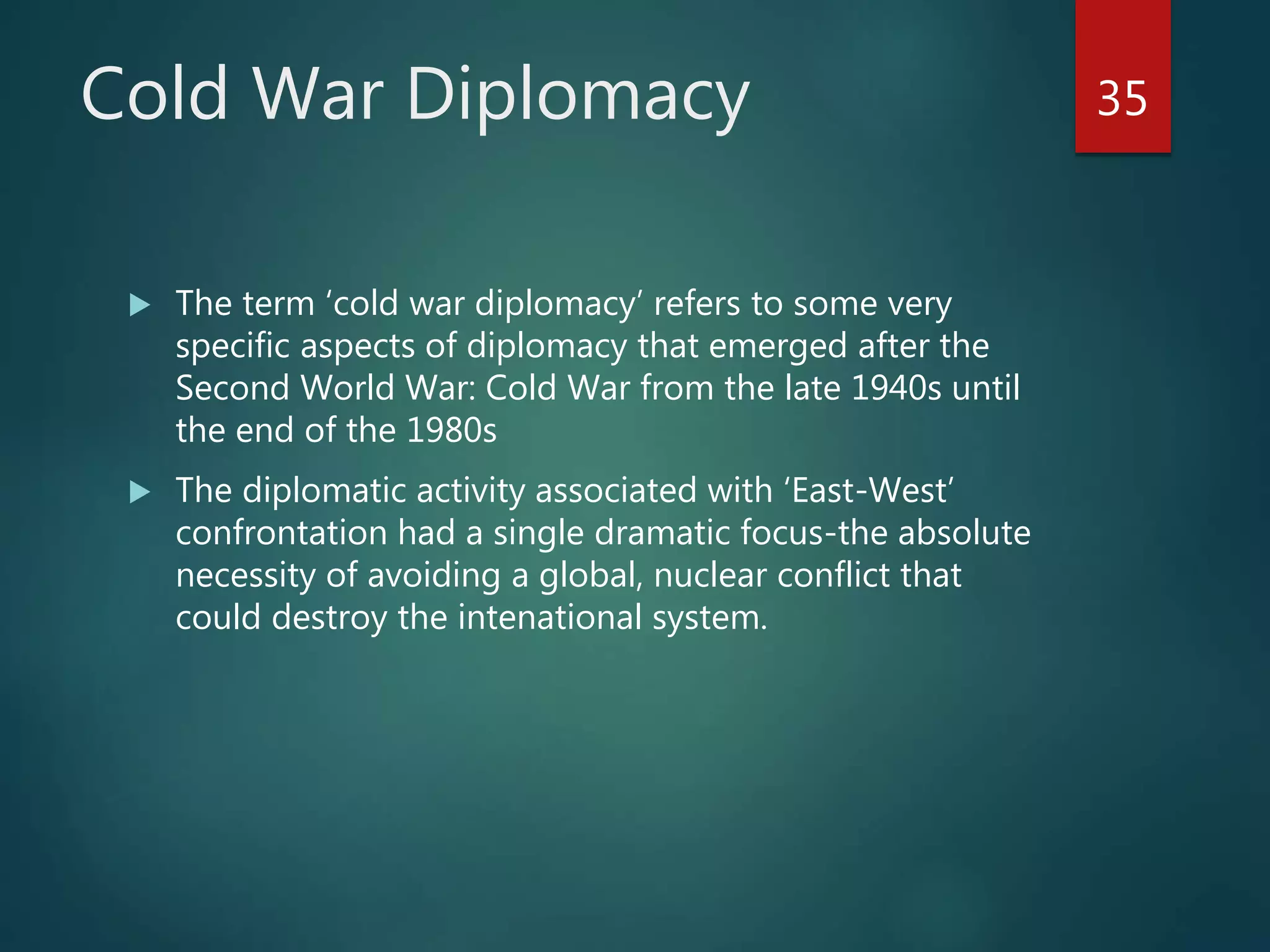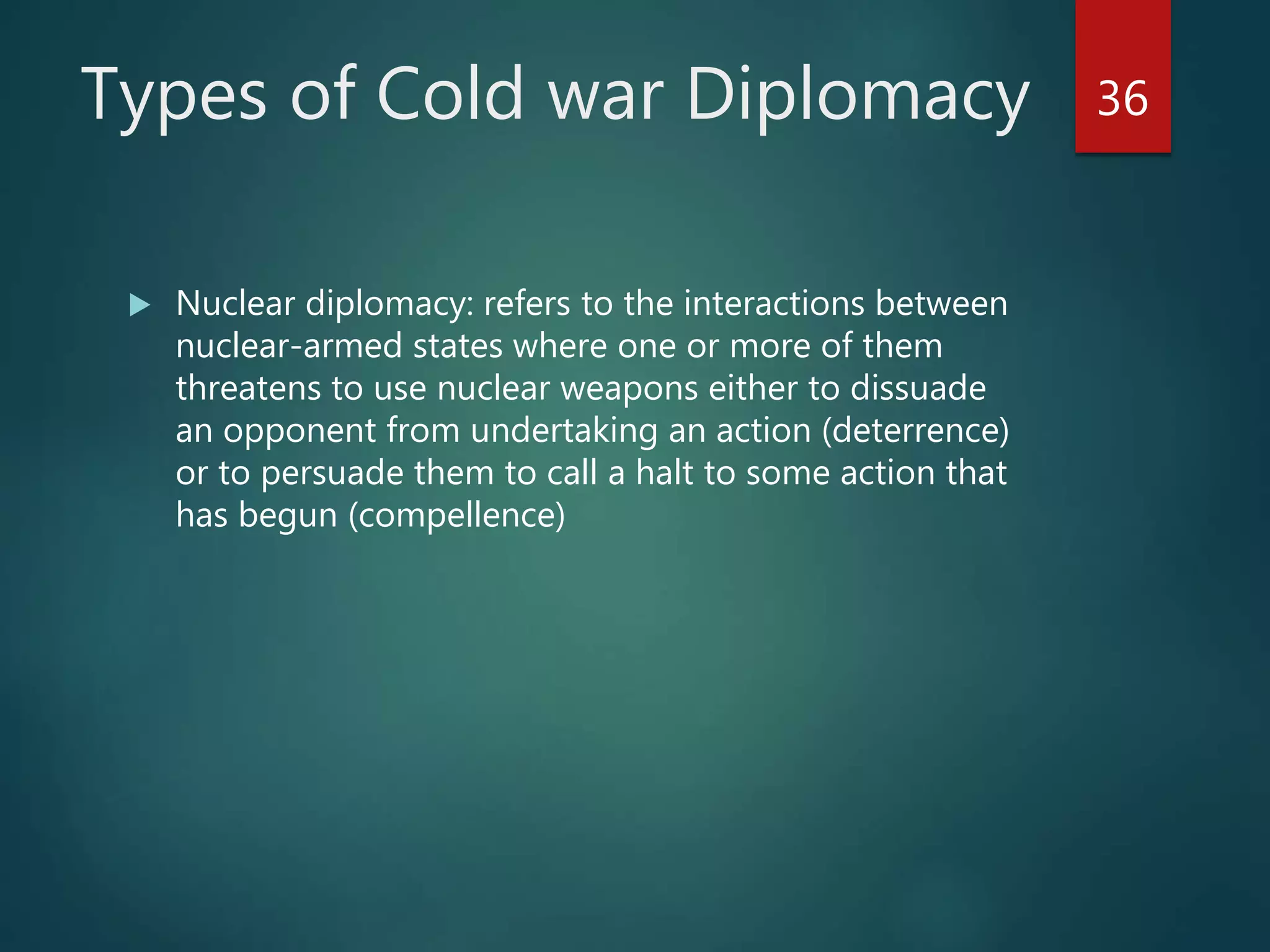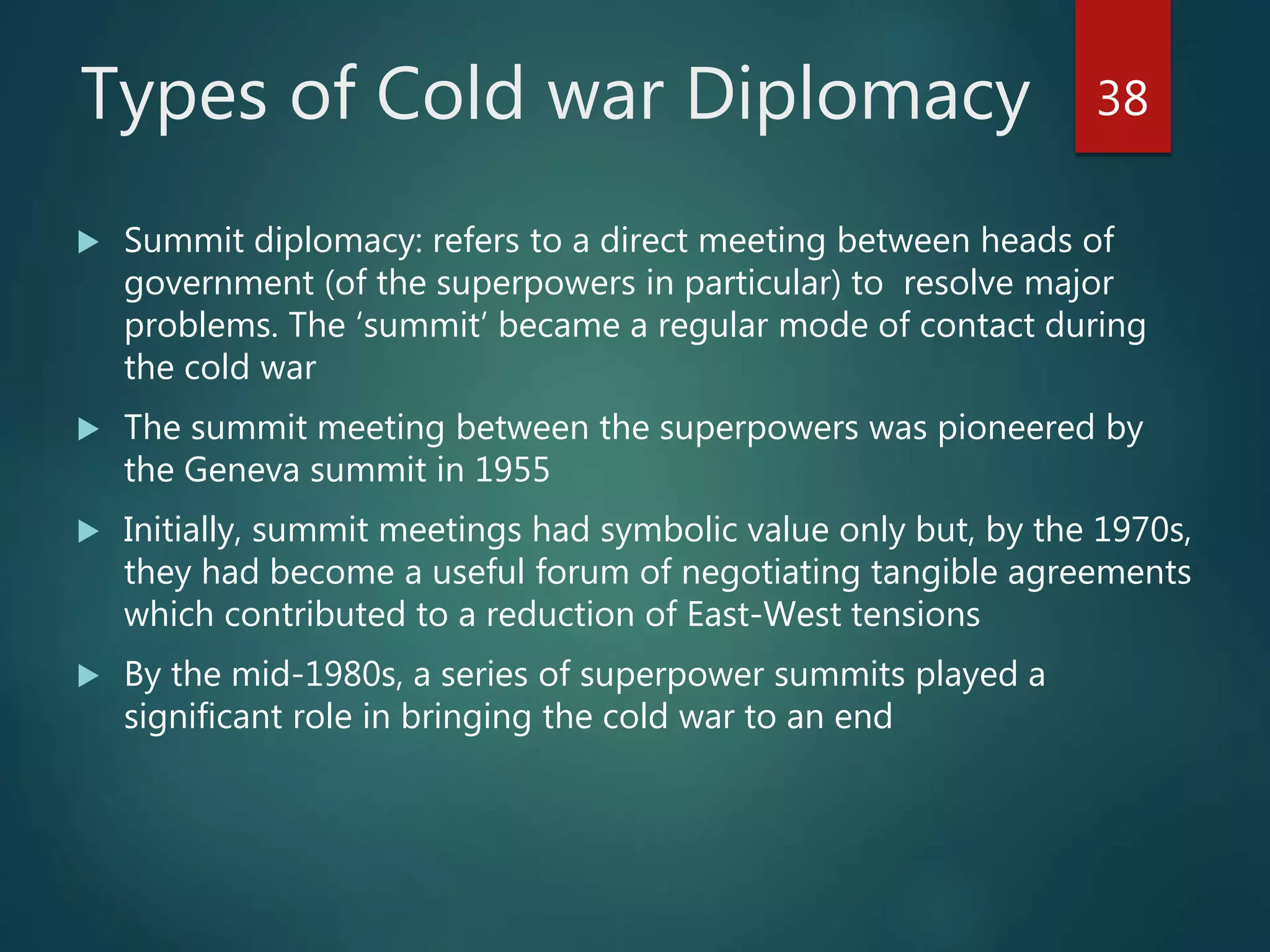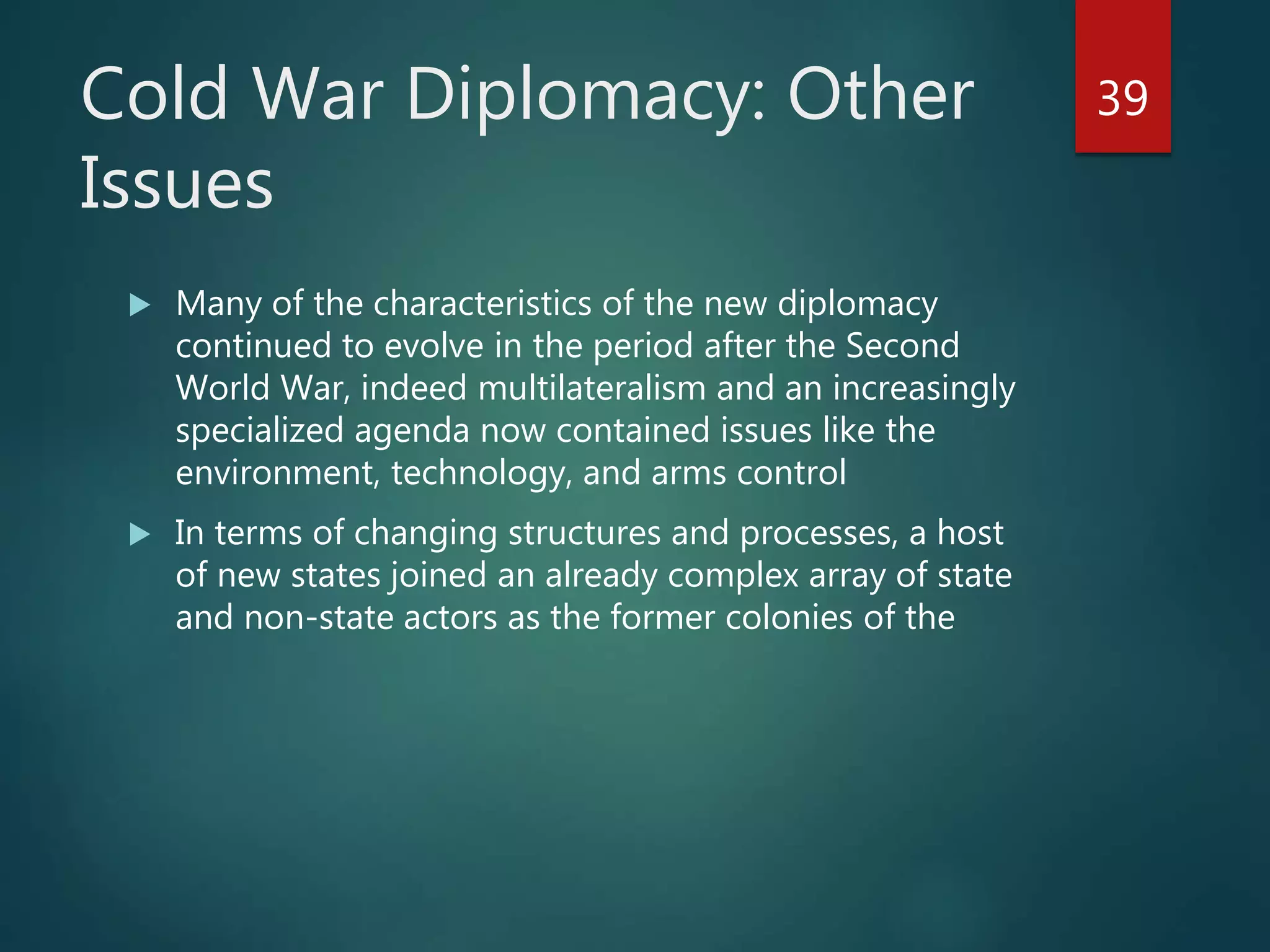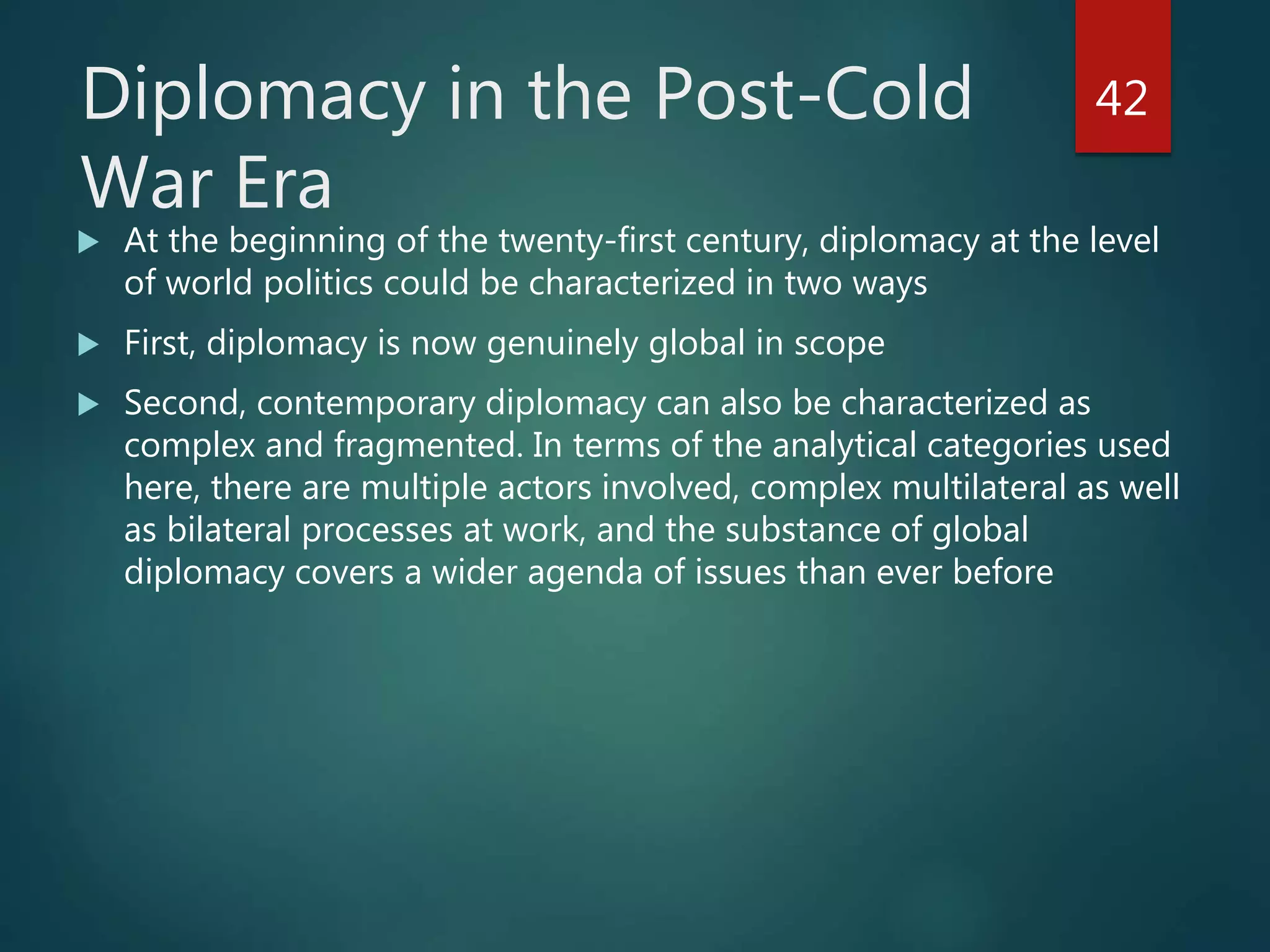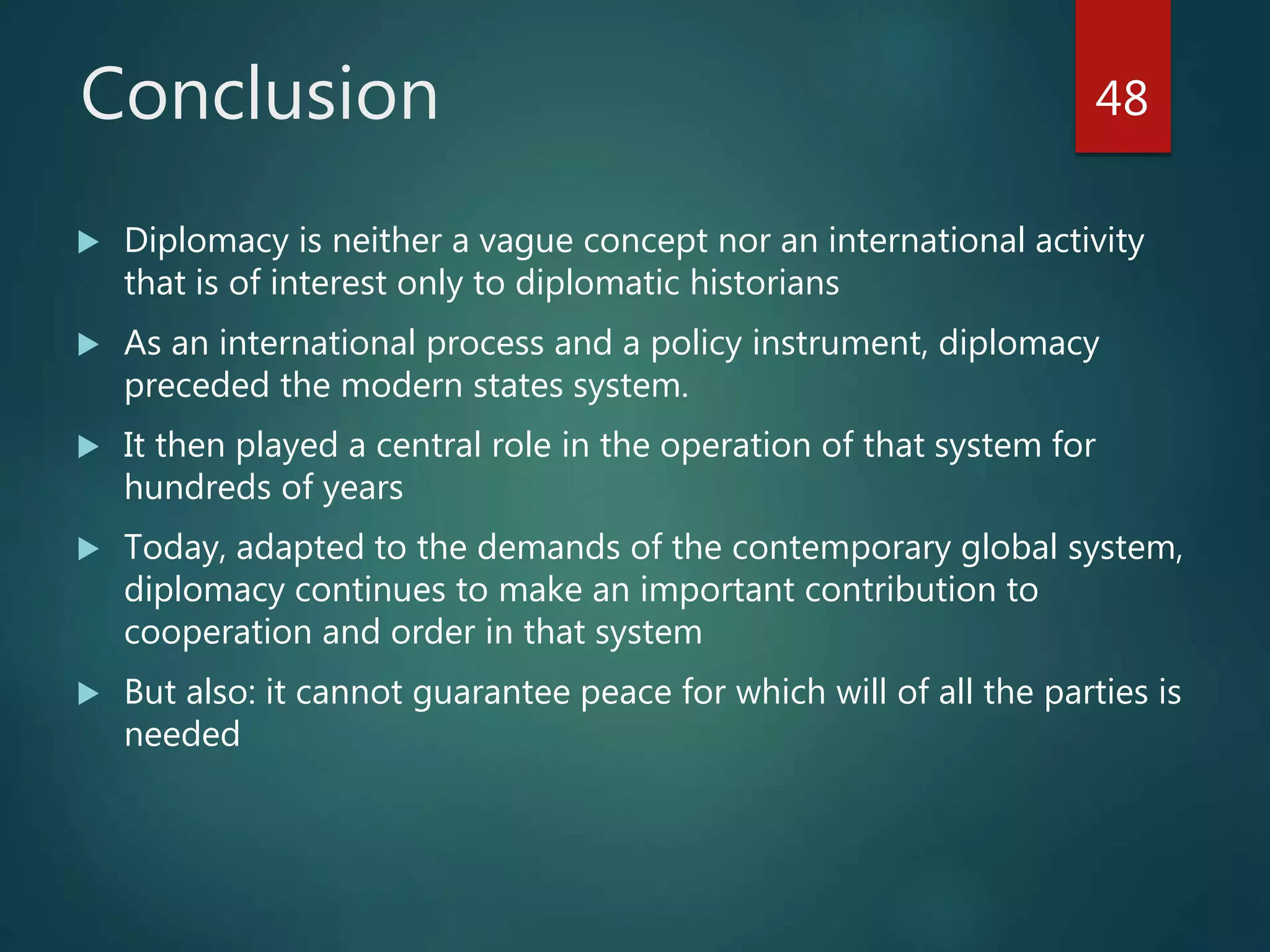The document discusses the concepts of diplomacy and world politics from both macro and micro perspectives. From a macro view, diplomacy refers to the fundamental process of communication between political entities that helps create stability in the global system by resolving conflicts through dialogue and negotiation. From a micro view, diplomacy provides insights into how international actors like states behave in the system and can be used as an instrument to achieve their foreign policy goals through direct negotiations or other methods. The document then outlines some key features of traditional diplomacy, including its state-based structure with permanent embassies, bilateral and secretive processes, and narrow agenda focused on issues of war, peace and personal monarchical ambitions.

